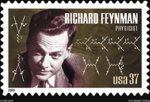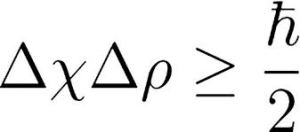
Okay, I admit it. I had an ulterior motive when I wrote the Star Trails Tetralogy. I don’t think it was a bad one, but it was there nonetheless. As I’ve mentioned before, perhaps ad nauseam, I was inspired to pursue a career in a technical field by the science fiction I read as a kid. And that is what I wanted to do with my stories, make science intriguing and interesting enough that my readers would love it as much as I do and want to know more. I mean, seriously. Why else would an otherwise normal person get a degree in physics? At least I thought I was normal. Then again, maybe not.
At any rate, my books have apparently succeeded to some degree. But don’t listen to me, I’m clearly biased and perhaps not to be trusted. Here’s what some of my reviewers have to say:
Marcha Fox has a gift for explaining the science in an interesting and original way. Sci-fi fans who love properly developed cultures backed up by hard and well understood science will devour these stories.
Science theory is a large part of this story and the writer uses many scenes and situations to explore warp drive, time bumps, worm holes, and warp gullies to name a few. When explanation is needed in a book, it usually slows progression of the plot, but the author uses the science as a “key” to unlock the puzzle of the many developing situations in which Creena finds herself. It’s a great book for anyone that wants to learn more about scientific concepts while being thoroughly entertained.
Anyone who loves hard science will lap this book up.
Having taught junior high science for a number of years I think this read would be a fabulous addition to classroom libraries as well as “the hungry for sci-fi lovers” personal bookshelf.
A great book for anyone that wants to learn more about scientific concepts while being thoroughly entertained.
The scientific details added greatly to the story without sounding like something out of a textbook.
I am in awe of the world author Marcha Fox has created. She has populated our galaxy with human colonies and aliens, enriching the story with intricate detail covering solar systems, seasons, geology, politics, anthropological, fauna, eco-commerce, technological, and spiritual beliefs that are unveiled layer upon layer as the story progresses.
[The author] integrates actual science into science fiction, creating worlds, customs, and life forms outside the world we live.
Needless to say I was deeply gratified and appreciative that these wonderful readers picked up on my ulterior motive and didn’t give me a one or two star review because it was too technical and therefore boring. Of course, nerds like myself LOVE the technical side, but that’s besides the point.
So what is the point? The point is that I didn’t stop there. I also put together “The Star Trails Compendium” which includes a glossary of terms, both fictitious and otherwise, as a companion volume to the stories. I include more details about the star system, Cyraria’s weird, lemniscate (figure-8 shaped) orbit, its effects on their horrific, extreme weather, political structure, and a bit more about the bnolar, the planet’s indigenous species. I hope no one is too disappointed that I refrained from including all the calculations I did while developing the star system, mostly because math is so tedious to express via the keyboard.
And here’s the best part: The ebook versions of the Compendium are FREE! (At least everywhere but Amazon, who’s a bit uncooperative, but might come around eventually given enough complaints. Hint, hint..)
If you’re an educator or perhaps a homeschooler, there’s an even better bonus especially for you. I’ve included suggestions for lesson plans and discussion topics based on the chapters of each book. Thus, any science teachers who have students who need a little bit more could assign my books as extra credit backed up by assignments which are all but laid out for you in the Compendium. Science clubs could likewise utilize them. Knowing how overloaded today’s teachers are, this could provide the needed stimulation for the Advanced Placement students without a lot of extra work on their part.
If you’re wondering how this works, here’s an example using an excerpt from Chapter 3 of “Beyond the Hidden Sky.”

The Escape Pod
Shortly after jettison the acceleration shell loosened its grip and shrunk back into the side of the seat but Creena remained in place, gripping the armrests with white-knuckled hands. She’d always been frustrated with the rapid heartbeat and breathing provoked by anger but that was nothing compared to what she was feeling now. She’d experienced a variety of emotions on Mira III, more than most that went through their ordered lives in a state of unquestioning, unreactive calm.
What she felt now, however, was stronger still, a deep, primal reaction from the core of her being. Seared by adrenaline every cell cried out with an unspeakable fear far deeper than any provoked merely by thought, terror firing her blood like a burning fuse.
Never in her entire life had she been so scared.
Her breathing rasped in her ears, mouth dry with her hands shaking and clammy against the armrests. Gradually her racing mind slowed and her heart stopped pounding though her breathing remained heavier than normal as she concentrated on her surroundings.
Funny, it didn’t even feel like she was moving anymore. But it hadn’t felt like the Aquarius was moving, either. She thought back to her Academy physics class and remembered that was the case when something was moving in a straight line at constant speed. The starfield on the holoscreen likewise seemed still but instinct told her that was simply a matter of scale.
She released the straps, their recoil sloppy and slow. The breathless, airy feeling swelled upward, the sensation similar to a soaring dive in an air cruiser. She gasped clutching her chest and the next thing she knew she was floating haplessly above the shell, like a sphere under electro-magnetic levitation.
She gasped in renewed horror.
Was she dead?
She pinched herself, hard, relieved only slightly when it hurt.
Across the pod lights blinked and flashed while the metal floor offered a dizzying design of concentric rings that still seemed to spring upward in pulsating waves. The illusion aggravated the growing nausea even as the facts fell into place.
The Aquarius hadn’t felt that much different from being confined in an ugly building. Certain areas like the galarium where wall-embedded holoscreens gave every impression that a real world lay beyond epoxy shields even added to the deception. But the pod was designed for survival and lacked the power hungry comforts of a starship.
And a mass generator’s gravity simulation was one of them.

And here are two of the Compendium Discussion and Lesson Plan Suggestions for Chapter 3:
- It doesn’t feel as if the pod is moving. Why?
When something is moving in a straight line at constant speed you can’t tell it’s moving. This relates to Newton’s 1st Law of Motion or the principle of inertia which states than an object will remain in a state of rest or constant velocity unless acted upon by unbalanced forces. Newton’s 2nd Law is best described by the equation Force = mass x acceleration or F=ma.
In other words, the force exerted on an object depends on its mass and how fast it is changing speed or accelerating. Newton’s 3rd Law relates to opposing forces, that whenever a force is applied to something, an equal and opposite force is generated, such as the kickback on a rifle or pushing off the side of a swimming pool.
- Why is Creena weightless in the pod?
It doesn’t have a “gravity simulator.” Mass such as that of a planet creates gravity which is proportional to how big it is. Scientists will don’t understand exactly how or why gravity works, but they can predict its strength based on the mass of an object or planet.
* * *
So this should give you some idea of the possibilities. Did I have an ulterior motive for this blog? Of course I did. I want my books to reach the audience for which they were intended! But here’s the good news. You can get “Beyond the Hidden Sky” as an ebook for only $0.99 and the Compendium for FREE! Why don’t you check it out? If you’re a teacher or parent trying to encourage your child to not only enjoy science but perhaps actually pursue it, what do you have to lose? Oh, yeah, there’s one more thing. If your library has ebook lending capability, it can obtain all four volumes of the Star Trails Tetralogy for free through Smashwords.
“Beyond the Hidden Sky” Buy Links
Amazon US: http://www.amazon.com/gp/product/0615658865/ref=as_li_tl?ie=UTF8&camp=1789&creative=9325&creativeASIN=0615658865&linkCode=as2&tag=valkyrastrol-20&linkId=DKGQSU3GYWZM6WH7
Smashwords: https://www.smashwords.com/books/view/509500
Barnes & Noble: http://www.barnesandnoble.com/w/beyond-the-hidden-sky-marcha-a-fox/1112260474
Kobo Link: http://store.kobobooks.com/en-US/ebook/beyond-the-hidden-sky
Apple: https://itunes.apple.com/us/book/beyond-the-hidden-sky/id957915250
Create Space (Print copy): https://www.createspace.com/3911767
“Star Trails Compendium” Links
Smashwords: https://www.smashwords.com/books/view/537630
Kobo: https://store.kobobooks.com/en-US/ebook/star-trails-compendium
Barnes & Noble: http://www.barnesandnoble.com/w/star-trails-compendium-marcha-fox/1121807004
iTunes: https://itunes.apple.com/us/book/star-trails-compendium/id989027687


 Sign up before October 30 for a chance to win one of three autographed copies of “The Terra Debacle: Prisoners at Area 51” being given away through Goodreads. Details
Sign up before October 30 for a chance to win one of three autographed copies of “The Terra Debacle: Prisoners at Area 51” being given away through Goodreads. Details 
 Ted Weimann is obsessed with science and shares what he learns generously in his recent book, Paradox: Fascinating Anomalies of Science from
Ted Weimann is obsessed with science and shares what he learns generously in his recent book, Paradox: Fascinating Anomalies of Science from 




















